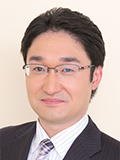Tatsuo Nozaki

Commendation
Metallogenic study on seafloor mineral resources and their analogues on land
A list of five major papers
- Nozaki, T., Kato, Y. and Suzuki, K. (2013) Late Jurassic ocean anoxic event: evidence from voluminous sulphide deposition and preservation in the Panthalassa. Scientific Reports, Vol. 3, 1889.
- Nozaki, T., Ishibashi, J.-I., Shimada, K., Nagase, T., Takaya, Y., Kato, Y., Kawagucci, S., Watsuji, T., Shibuya, T., Yamada, R., Saruhashi, T., Kyo, M. and Takai, K. (2016) Rapid growth of mineral deposits at artificial seafloor hydrothermal vents. Scientific Reports, Vol. 6, 22163.
- Nozaki, T., Ohta, J., Noguchi, T., Sato, H., Ishikawa, A., Takaya, Y., Kimura, J.-I., Chang, Q., Shimada, K., Ishibashi, J.-i., Yasukawa, K., Iijima, K. and Kato, Y. (2019) A Miocene impact ejecta layer in the pelagic Pacific Ocean. Scientific Reports, Vol. 9, 16111.
- Nozaki, T., Nagase, T., Ushikubo, T., Shimizu, K., Ishibashi, J.-i. and the D/V Chikyu Expedition 909 Scientists (2021) Microbial sulfate reduction plays an important role at the initial stage of subseafloor sulfide mineralization. Geology, Vol. 49, No. 2, 222-227.
- Nozaki, T., Nagase, T., Takaya, Y., Yamasaki, T., Otake, T., Yonezu, K., Ikehata, K., Totsuka, S., Kitada, K., Sanada, Y., Yamada, Y., Ishibashi, J.-i., Kumagai, H., Maeda, L. and the D/V Chikyu Expedition 909 Scientists (2021) Subseafloor sulphide deposit formed by pumice replacement mineralisation. Scientific Reports, Vol. 11, 8809.
Major achievements
Dr. Tatsuo Nozaki has elucidated the formation processes of submarine mineral resources, especially seafloor hydrothermal deposits, based on the geochemical methods and detailed petrographic observations. Using a Re-Os isotope analysis, Dr. Nozaki was the first to elucidate the depositional age of volcanogenic massive sulfide in the Besshi-type deposits, which had been difficult to do so far. Based on the depositional ages of several Besshi-type deposits distributed in Sanbagawa Belt, he proposed a new model in which the formation of the deposits was promoted by global-scale changes in the marine environment. Furthermore, based on the in-situ sulfur isotope analysis, he showed that sulfur that underwent a microbial sulfate reduction process played an important role in the initial formation stage of seafloor hydrothermal deposits. In addition, by collaborating with researchers in other fields and applying the Re-Os isotope analysis, which is our specialty, to sedimentary rocks, we have made significant contributions to the elucidation of paleoceanographic changes caused by large-scale geological processes such as impact events and volcanic activities. He is highly regarded both nationally and internationally not only as a leading researcher of economic geology, but also as a researcher who is engaged in deciphering paleoenvironments from a geochemical perspective.
[ ORCiD ]
[ Research Map ]
Recommender
Ken Takai
Supporters
Jun-ichiro Ishibashi, Tetsuji Onoue
